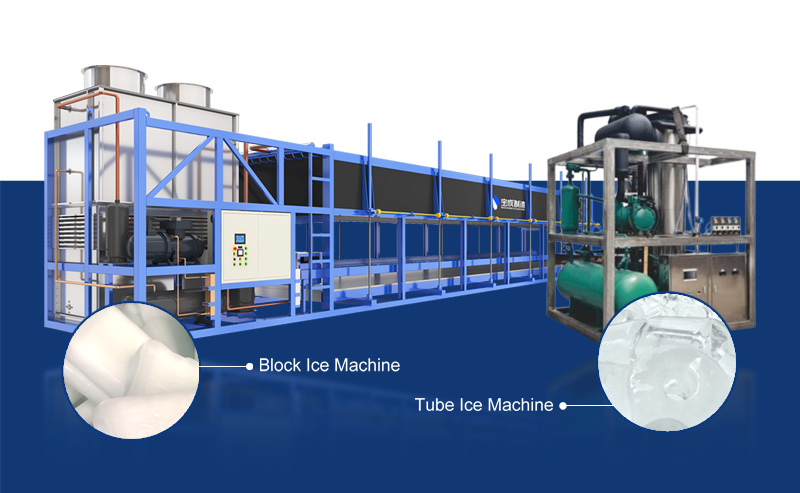Industrial Ice Block Machine vs. Tube Ice Machine: Key Differences Explained
May 06, 2025
Industrial ice machines are indispensable in sectors like food processing, fisheries, construction, and healthcare. Among them, industrial ice block machines and tube ice machines dominate the market, each offering unique advantages. This article explores their differences in ice structure, technical principles, applications, and efficiency, empowering businesses to make informed decisions.
Ice Structure & Physical Properties
Industrial Ice Block Machine
- Ice Type: Produces large, dense blocks (e.g., rectangular or cylindrical shapes) weighing 5–50 kg, with thicknesses up to 10–20 cm.
- Properties: High density and compressive strength, ideal for prolonged storage and direct contact with perishables like seafood or concrete cooling.
Industrial Tube Ice Machine
- Ice Type: Generates hollow cylindrical ice tubes with adjustable dimensions (outer diameter: 22–30 mm; height: 25–42 mm; inner diameter: 5–10 mm). Walls are uniform and translucent.
- Properties: Hollow structure enhances breathability, reduces clumping, and suits rapid cooling or direct consumption (e.g., beverages).

Technical Principles & Production Processes
Industrial Ice Block Machine
- Principle: Uses plate or spiral evaporators to freeze water into blocks. Systems may employ brine cooling (indirect refrigeration) or direct expansion.
- Process:
- Freezing: Water is circulated over evaporator surfaces.
- De-icing: Blocks are released via thermal or mechanical methods.
- Storage: Ice is transferred to insulated bins.
Industrial Tube Ice Machine
- Principle: Utilizes spiral water-film technology. Water freezes on inner walls of vertical tubes, followed by hot gas de-icing and automated cutting.
- Process:
- Water Circulation: Pumped into vertically aligned tubes.
- Spiral Freezing: Ice forms as a thin layer inside tubes.
- Hot Gas De-icing: Releases ice columns, which are sliced into uniform tubes.
Selection Guide
Choose Ice Block Machines If:
- Long-term storage or heavy-duty cooling is required.
- Applications demand structural integrity (e.g., construction).
Choose Tube Ice Machines If:
- Rapid cooling, hygiene, or portion control are priorities (e.g., food service).
- Energy efficiency and automation are critical.
Market Trends & Innovations
- Eco-Friendly Refrigerants: R22, R404a, R507, etc.
- Smart Automation: IoT-enabled monitoring for predictive maintenance.
- Dynamic Ice-Making: Supercooled water techniques for higher efficiency.
Conclusion
Understanding the distinctions between industrial ice block and tube ice machines ensures optimal ROI. While block ice excels in durability and large-scale cooling, tube ice offers versatility and energy savings.
Need a tailored ice solution? Contact our professional team for expert guidance on selecting the perfect machine for your industry. Boost efficiency and sustainability with our cutting-edge ice systems today!
 November 22, 2025
November 22, 2025

